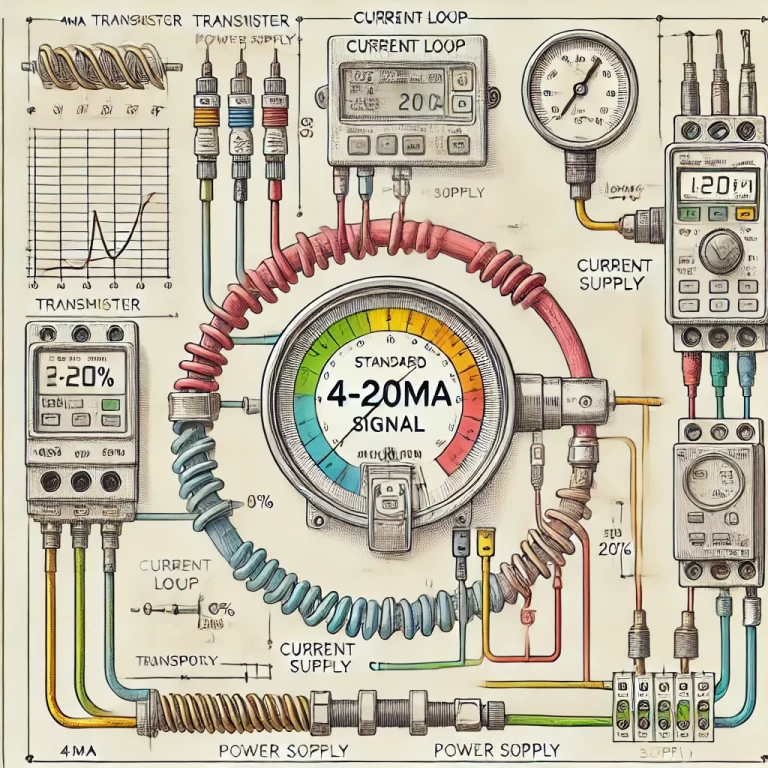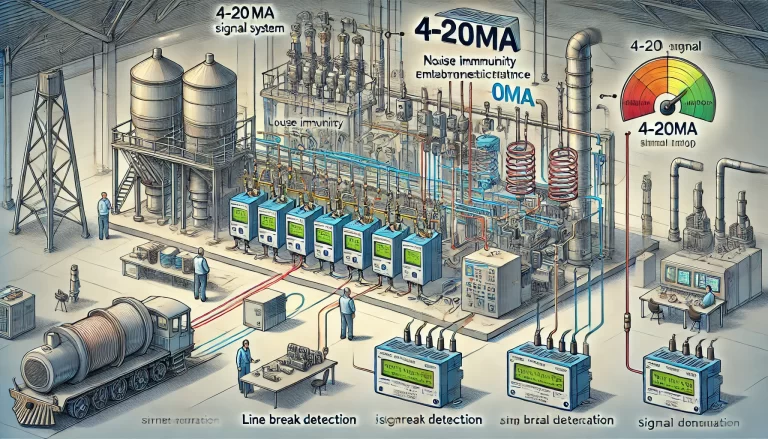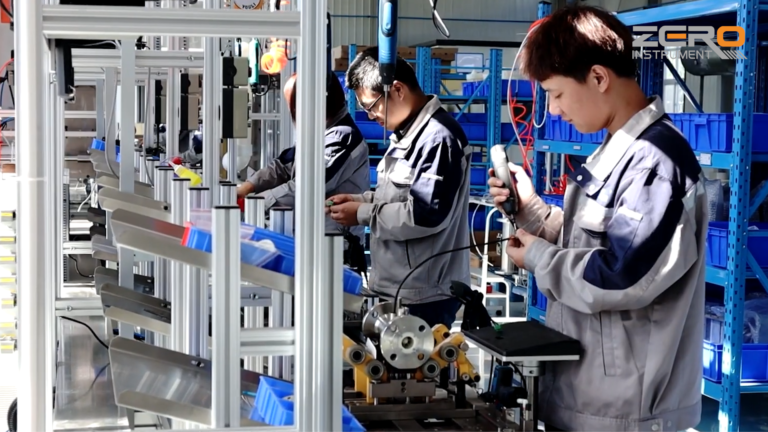The 4-20mA signal has become the standard in industrial control systems and process automation because of its proven reliability and efficiency in transmitting process data.
This current loop signal is used to communicate the output of sensors and transmitters to controllers, ensuring stable and accurate data transmission in a wide range of industrial environments.

But why specifically 4-20mA? Why not use a voltage signal or a different range of current? The reasons are both technical and practical:
Strong Noise Immunity: Current signals are less susceptible to electromagnetic interference compared to voltage signals. In industrial settings where there is significant electromagnetic noise generated by large motors, inverters, and other equipment, the 4-20mA signal remains stable. It is less likely to pick up interference, which ensures that the signal reaching the control system is accurate and reliable.
Zero Point Detection: The choice of 4mA as the lower limit (instead of 0mA) is deliberate. If the system detected 0mA, it could indicate either a process value of zero or a broken wire or failure in the system. By using 4mA to represent the zero point, any signal below this threshold (such as 0mA) can clearly indicate a fault in the wiring or device, allowing for easy and immediate fault detection.
Distance Without Signal Loss: Current signals don’t degrade over long distances as voltage signals do. When transmitting signals over long cables, the resistance of the cable can cause voltage drops, leading to inaccuracies in voltage-based systems. However, the current in a 4-20mA loop remains constant regardless of the cable length or resistance, ensuring accurate signal transmission over distances often exceeding hundreds of meters.
Power and Signal on the Same Line: The 4-20mA signal often uses two-wire systems, where the same pair of wires carries both the signal and the power required to run the sensor or transmitter. This reduces the need for additional wiring, simplifying installations and reducing costs.
Compatibility and Ease of Integration: The 4-20mA signal has become a universally accepted standard across the industry, meaning that sensors, transmitters, and control systems from different manufacturers are all designed to work together seamlessly. This standardization reduces integration issues and ensures that equipment can easily be replaced or upgraded without compatibility concerns.
Linear and Non-linear Compensation: Some process variables, like flow and temperature, might not have a linear relationship with the signal generated by the sensor. The 4-20mA signal allows for easy linearization of the data by the control system, ensuring accurate readings even with non-linear devices.
The 4-20mA signal standard provides a simple, reliable, and efficient way to transmit process variables in industrial environments, offering strong noise immunity, long-distance transmission capabilities, and built-in safety features. Its widespread adoption and proven reliability make it a staple of modern process control systems.

Advantages of the 4-20mA Signal in Industrial Automation
The 4-20mA signal standard is widely used in industrial control and automation systems. It offers several advantages that make it the preferred choice for transmitting sensor data and process variables in demanding industrial environments. Below, we explore these advantages in greater detail.
1. Strong Resistance to Interference
One of the key reasons 4-20mA signals are favored in industrial settings is their strong resistance to electromagnetic interference (EMI). In many industrial environments, large machines, motors, and high-frequency equipment generate significant electromagnetic noise. While voltage signals can easily pick up interference from these sources, current signals like 4-20mA are far less susceptible to such disturbances.
This resistance to noise ensures that the signal transmitted remains stable and reliable over time, even in environments with heavy electromagnetic activity.
2. No Signal Degradation Over Long Distances
In an industrial setup, sensors and transmitters are often placed far from the control systems. One significant advantage of 4-20mA current loops is that the signal does not degrade over long distances. Unlike voltage signals, where resistance in the transmission wire can cause voltage drops, current in a loop remains constant regardless of the length of the wire or the resistance in the circuit.
This makes the 4-20mA signal ideal for applications where data needs to be transmitted over several hundred meters without any loss of accuracy.
3. Inherent Fault Detection (Line Break Detection)
The 4-20mA range provides a built-in mechanism for detecting circuit faults, which is essential for ensuring safety and reliability in industrial systems. The signal’s range starts at 4mA, rather than 0mA, for a specific reason: it allows for easy identification of a broken wire or faulty connection.
If the control system detects a current of 0mA, it indicates that the signal loop is broken, which helps operators quickly diagnose and address issues. This line-break detection is a critical feature that enhances system safety, as it can immediately signal when a sensor or device has malfunctioned.

4. Compatibility Across Devices
The 4-20mA signal standard is widely accepted and supported across the industrial automation sector, making it highly compatible with a vast range of equipment from different manufacturers. Whether you are using sensors, actuators, controllers, or PLCs (Programmable Logic Controllers), most devices in the industry are designed to work seamlessly with 4-20mA signals.
This universal compatibility reduces complexity when integrating new systems or devices into existing setups, as there is no need for signal converters or specialized interfacing hardware.
5. Simplified Wiring (Power and Signal on Same Line)
In many industrial applications, reducing wiring complexity is crucial to minimizing both installation and maintenance costs. The 4-20mA system allows for two-wire communication, where the same wires used to transmit the signal can also supply power to the sensor or transmitter.
This “loop-powered” design eliminates the need for a separate power supply, reducing the number of cables required and simplifying installation. Especially in large-scale installations, the savings in wiring and labor costs can be significant.

6. Compensation for Non-linear Devices
Some industrial sensors and transducers exhibit non-linear behavior, meaning that their output is not directly proportional to the measured variable.
The 4-20mA signal system can easily accommodate these non-linear devices. With the help of transmitters and control systems that can linearize the signal, it’s possible to correct for the non-linear response of a sensor, ensuring that the final output is both accurate and meaningful for the control system.
7. Increased Safety in Hazardous Environments
In industrial environments where there is a risk of fire or explosion (e.g., chemical plants, oil refineries), safety is a top priority. Because the 4-20mA signal operates on low power, it significantly reduces the risk of creating sparks, making it inherently safer in hazardous environments.
Moreover, it is compatible with intrinsically safe systems, which are specifically designed to prevent ignition sources in potentially explosive atmospheres. The low power nature of the signal helps to meet safety regulations and minimize risks.

8. High Accuracy and Resolution
The 4-20mA signal provides high precision in transmitting process variables. In most cases, 20mA represents the full range of the measured variable, while 4mA corresponds to the zero point.
This 16mA span allows for high resolution and accuracy when measuring process variables. In critical applications where precise control is needed, such as in chemical dosing, temperature control, or flow regulation, the 4-20mA signal delivers reliable and precise data that supports fine-tuned control.
9. Dual Communication with HART Protocol
Modern industrial systems often require more than just a basic process variable measurement. With the HART (Highway Addressable Remote Transducer) protocol, which can be layered on top of the 4-20mA signal, operators can achieve two-way communication. This enables the transmission of additional data, such as diagnostic information, device configuration, and status reports, alongside the primary process variable.
The ability to transmit both data and control commands on the same loop adds intelligence to industrial devices, allowing for smarter diagnostics and more efficient maintenance.

Conclusion
The 4-20mA signal standard has proven its value in industrial automation for its reliability, simplicity, and versatility. Its inherent resistance to noise, ability to transmit signals over long distances without degradation, and built-in safety features make it an ideal solution for process control and sensor data transmission.
Furthermore, its wide compatibility with devices across the industry, reduced wiring complexity, and high accuracy ensure that it remains a trusted standard even in today’s technologically advanced industrial environments.
Whether you are dealing with hazardous environments, need precise data transmission, or want to minimize maintenance costs, the 4-20mA current loop provides a robust and efficient solution for a wide range of industrial applications.
